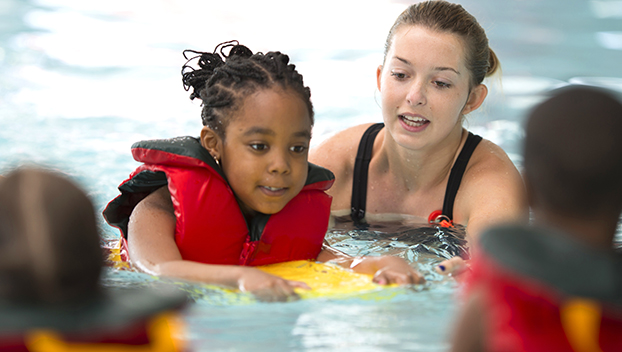HEALTHY LIVING — 6 tips for safe summer fun in the water
Published 12:04 am Saturday, May 11, 2024

- A number of organizations offer classes for both beginning and experienced swimmers and boaters. Check with your YMCA, local hospital, or chapter of the Red Cross.
|
Getting your Trinity Audio player ready...
|
Summer is upon us and here in southeast Texas, we are fortunate to be surrounded by water.
Lakes, ponds, rivers, bayous, beaches and of course, pools. When the weather turns warm, everyone wants to be in or around the water. Hanging out at the pool or the beach on a hot day is a great way to beat the heat.
There are so many opportunities to enjoy the water; unfortunately, this also presents circumstances for accidental drownings. For people between the ages of 5 and 24, drowning is the second leading cause of accidental death.
Trending
Drowning can occur in as little as 2 inches of water, in as little as 90 seconds. Stop and reread that last sentence.
It doesn’t have to be that way. Most water-related accidents can be avoided by knowing how to stay safe and following a few simple guidelines.
Learning how to swim is essential if you plan on being on or near water. Please, get your children, grandchildren, and yourself into a certified swim instruction course.
Before signing up with anyone, make sure that instructor has received training from a certified program. It does make a difference. Aside from having your children and yourself properly instructed in swim skills, there are a few tips you need to keep in mind when heading out to enjoy the water.
“Buddy up!” Never swim alone. Always swim with a partner, every time — whether you’re swimming in a backyard pool or in a lake. Even experienced swimmers can become tired or get muscle cramps, which might make it difficult to get out of the water. When people swim together, they can help each other or go for help in case of an emergency.
Get skills. Speaking of emergencies, it’s good to be prepared. Learning some life-saving skills, such as CPR and rescue techniques, can help you save a life. A number of organizations offer classes for both beginning and experienced swimmers and boaters. Check with your YMCA, local hospital, or chapter of the Red Cross.
Trending
Know your limits. Swimming can be a lot of fun — and you might want to stay in the water as long as possible. If you’re not a good swimmer or you’re just learning to swim, don’t go in water that’s so deep that you can’t touch the bottom and don’t try to keep up with skilled swimmers. That can be hard, especially when your friends are challenging you — but it’s a pretty sure bet they’d rather have you safe and alive.
Swim in safe areas only. It’s a good idea to swim only in places that are supervised by a lifeguard. No one can anticipate changing ocean currents, rip currents, sudden storms, or other hidden dangers. Pay attention when warnings are posted. In the event that something does go wrong, lifeguards are trained in rescue techniques.
Alcohol and water never mix. Alcohol is involved in numerous water-related injuries and up to half of all water-related deaths. The statistics for teenage guys are particularly scary: One half of all adolescent male drownings are tied to alcohol use.
If you can’t see them, you can’t save them. Don’t depend solely on the lifeguard. Yes, they are highly trained to save lives but they are also watching many other swimmers. If you bring your children to the pool, watch them. Don’t get so involved with visiting with others, reading, or your phone/tablet, that you are not always aware of their location. Don’t let a fun time turn into a tragedy.
Be prepared, stay aware, and have fun!
Jody Holton writes about health for Port Arthur Newsmedia. She can be reached at jholton3@gt.rr.com.





